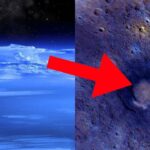Astronomers using the NASA/ESA/CSA James Webb Space Telescope combined the capabilities of the telescope’s two cameras to create a never-before-seen view of a star-forming region in the Carina Nebula. Captured in infrared light by the Near-Infrared Camera (NIRCam) and Mid-Infrared Instrument (MIRI), this combined image reveals previously invisible areas of star birth.
What looks much like craggy mountains on a moonlit evening is actually the edge of a nearby, young, star-forming region known as NGC 3324. Called the Cosmic Cliffs, this rim of a gigantic, gaseous cavity is roughly 7,600 light-years away.
The cavernous area has been carved from the nebula by the intense ultraviolet radiation and stellar winds from extremely massive, hot, young stars located in the centre of the bubble, above the area shown in this image. The high-energy radiation from these stars is sculpting the nebula’s wall by slowly eroding it away.
NIRCam – with its crisp resolution and unparalleled sensitivity – unveils hundreds of previously hidden stars, and even numerous background galaxies. In MIRI’s view, young stars and their dusty, planet-forming disks shine brightly in the mid-infrared, appearing pink and red. MIRI reveals structures that are embedded in the dust and uncovers the stellar sources of massive jets and outflows. With MIRI, the organic, soot-like material on the surface of the ridges glows, giving the appearance of jagged rocks.


